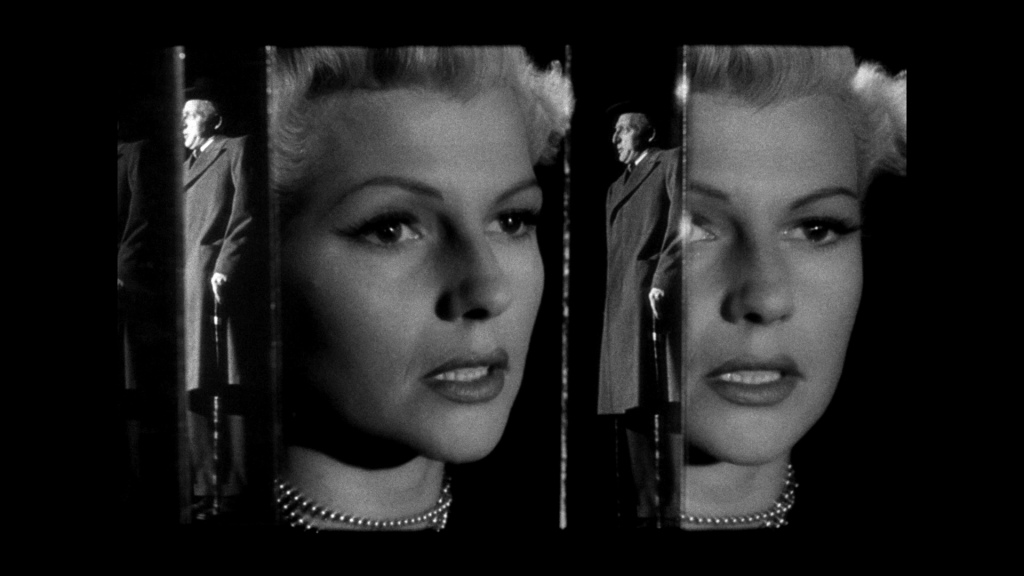
Distributor: Mill Creek Entertainment
Release Date: March 17, 2015
Region: Region Free
Length: 01:27:30
Video: 1080P (MPEG-4, AVC)
Main Audio: 2.0 English DTS-HD Master Audio
Subtitles: English
Ratio: 1.37:1
Bitrate: 29.53 Mbps
Notes: This title received a prior North American Blu-ray release from Sony, but the transfer was inferior. It was also given a Region Free UK release by INDICATOR that includes a very similar transfer.
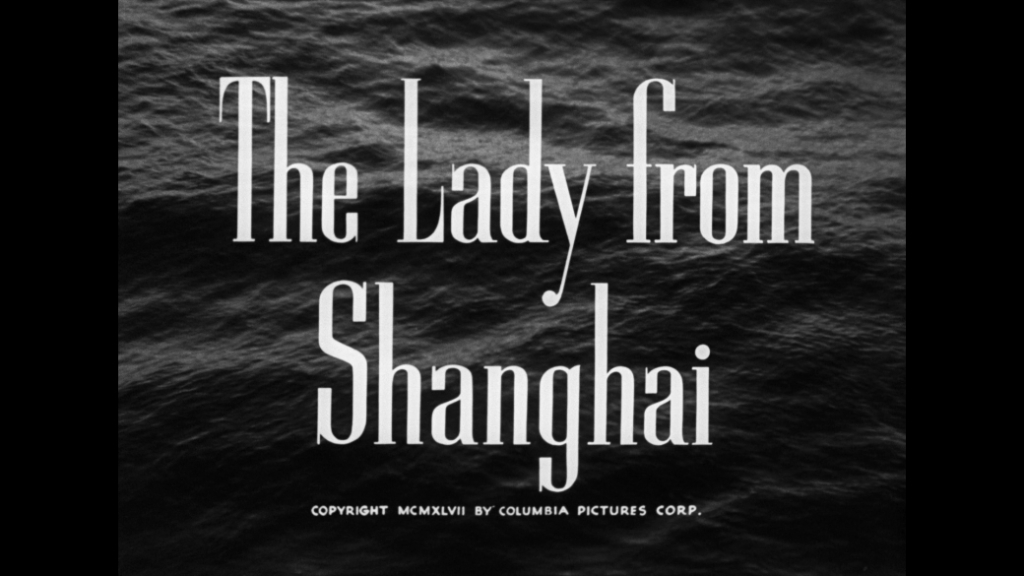
“I believe you know the story of [The] Lady from Shanghai. I was working on that spectacular theater idea, Around the World in 80 Days, which was originally to be produced by Mike Todd. But, overnight, he went bankrupt and I found myself in Boston on the day of the premiere, unable to take my costumes from the station because 50,000 dollars was due. Without that money we couldn’t open. At that time I was already separated from Rita; we were no longer even speaking. I did not intend to do a film with her. From Boston I got in touch with Harry Cohn, then director of Columbia, who was in Hollywood, and I said to him, ‘I have an extraordinary story for you if you send me 50,000 dollars, by telegram in one hour, on account, and I will sign a contract to make it.’ Cohn asked, ‘What story?’ I was telephoning from the theater box office; beside it was a pocket books display and I gave him the title of one of them: Lady from Shanghai.
I said to him, ‘Buy the novel and I’ll make the film.’ An hour later we received the money. Later I read the book and it was horrible so I set myself, top speed, to write a story. I arrived in Hollywood to make the film with a very small budget and in six weeks of shooting. But I wanted more money for my theater. Cohn asked me why I didn’t use Rita. She said she would be very pleased. I gave her to understand that the character was not a sympathetic one, and this might hurt her image as a star in the public eye. Rita was set on making this film, and instead of costing 350,000 dollars, it became a two million dollar film. Rita was very cooperative. The one who was horrified on seeing the film was Cohn.” —Orson Welles
…And so goes the legend behind what is quite possibly the director’s most damaged Hollywood effort. Many scholars believe that the film’s failure was the final death blow to his Hollywood career (although he would make Macbeth for Republic the following year and return a decade later with Touch of Evil). Only one thing is certain: the film, it’s troubled production, and the studio’s mutation of Welles’ original editing and intention for the film during post-production is wrapped around legend—and legend tends to be a tumultuous blend of truth and interesting fiction.
There are even signs of apocryphal information in the director’s origin story. For one thing, the picture is an adaptation of a novel entitled “If I Die Before I Wake” by Sherwood King—a novel owned by Columbia after being sold to them by William Castle. However, some elements seem to be true and Cohn sent the director the money that he needed believing that he was getting a writer, director, and a leading actor for a ridiculously low price. Of course, he would soon regret his acceptance of this deal.
The production seemed cursed from the start. Cohn was furious when the director gave Rita Hayworth a make-over for the film and truly believed that her new blonde hairstyle would ruin her career—an opinion that is both incredibly misogynistic and short-sighted since hair grows back and she could always wear a wig during the interim. In any case, this poisoned his opinion of Welles and The Lady from Shanghai from the very beginning of their working relationship. Things were to only get worse when cameras began rolling on location in Mexico. The cast and crew were cursed with the worst environment imaginable and had to deal with poisonous creatures and insects as well as illness and severe weather. Welles was bitten by an insect that cause a reaction so severe that his face swelled to the point where he couldn’t even open one of his eyes, Hayworth became ill numerous times, various crew members contracted dysentery, his assistant cameraman (Donald Ray Cory) became overheated and died of a heart-attack, Errol Flynn (who owned the yacht that appears in the film) stayed drunk and often hold up the production by disappearing for hours at a time, and all of this put them behind schedule.
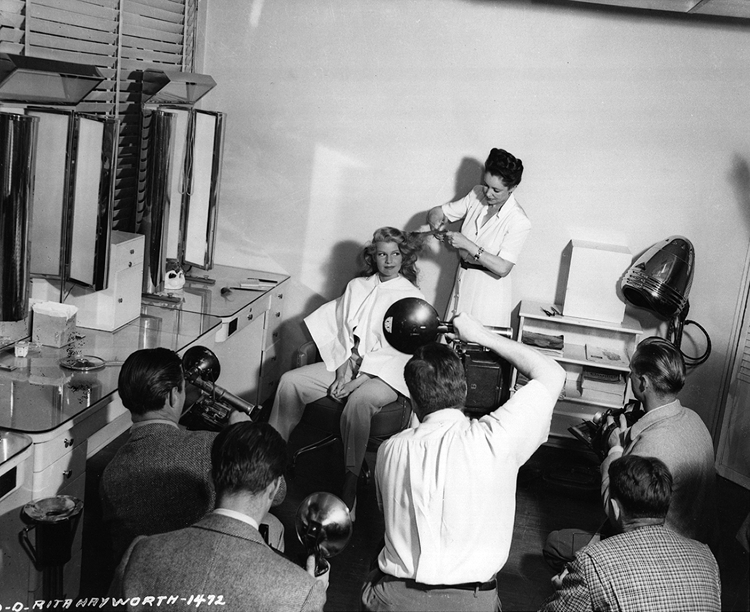
When Viola Lawrence (the film’s editor and studio stooge) saw the film’s unique location footage, she became worried and reported to Cohn. When he reviewed the rushes, he ordered that Welles shoot glamorous close-ups of Hayworth to have inserted into the film. The result is that the film has a number of awkwardly inserted close-ups of Hayworth that are completely unmotivated. Since Hayworth’s previous films usually included a singing performance, he also had Welles shoot her singing “Please Don’t Kiss Me” during one of the yachting sequences. He somehow made this work for her character, but it wasn’t really necessary and does date the film quite a bit.
Lawrence would again wreak havoc after a preview of the director’s 155 minute rough cut tested poorly. Over an hour of footage was deleted from the film—including substantial portions of the scene at the Chinese opera and the much-lauded funhouse finale. It’s fair to assume that the film would have been trimmed to some extent regardless, but taking an hour of footage out of the film has resulted in an incredibly uneven film (albeit an incredibly interesting one).
To make matters worse, the Welles absolutely hated Heinz Roemheld’s score (and for good reason). He had gone to enormous effort to temp the film in order to give the eventual composer an idea of the proper tone that he wanted for each moment as well as where to add and where not to add music. These cues were entirely ignored by Roemheld. After all, he didn’t work for Welles. He worked for Cohn.
After hearing the result, Welles wrote a memo begging to have the film re-scored. This request was also ignored. Most of the Columbia suits had already written the film off as a disaster and didn’t really want to spend another cent on a film that was doomed to failure—a prophesy they ensured by shelving the film for a year. Of course, this only signaled to the critics to prepare their poison pens for a real stinker, and they were more than happy to oblige.
These things happened all too often throughout Orson Welles’ career, but The Lady from Shanghai seems to suffer the most for it. It is probably the weakest of his Hollywood efforts. Citizen Kane, The Magnificent Ambersons, and Touch of Evil tower above it while The Stranger and Macbeth are more coherent and no less interesting. Lady has a number of brilliant touches, but the overall result is an awkward and somewhat sloppily fragmented viewing experience. It doesn’t flow organically but instead relies on voice-overs to bridge scenes together and answer the inevitable questions imposed on the audience. The film’s final explanation is rendered unsatisfying because of this particular weakness—and in the end these deficiencies are only made more infuriating by the flashes of brilliance inherent in the film’s better moments.
It is impossible to know for certain whether or not The Lady from Shanghai would have worked better had it not fallen prey to studio hysteria, but it is impossible not to lament the fact that we will never find out.

The Presentation:
3 of 5 Stars
Mill Creek Entertainment houses their disc in the standard Blu-ray case with a sleeve featuring film related artwork. They’ve made the unfortunate mistake of not utilizing the film’s original one sheet design as it was vastly superior.

One assumes they decided that it was necessary to have Welles on the cover. They missed a pretty great opportunity as far as their presentation is concerned.

The static menu features an attractive design, but one feels obliged to warn readers that there are no chapter stops on the disc.
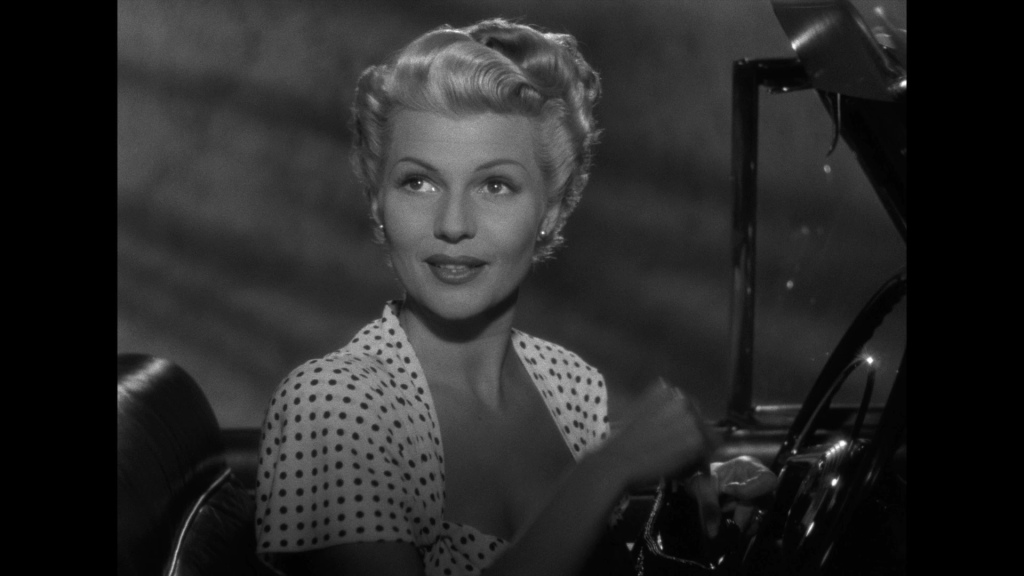
Picture Quality:
4.5 of 5 Stars
Mill Creek Entertainment isn’t known for quality transfers, but Sony gave them an incredible 4K restoration master for this this release. Frankly, this new Mill Creek release is a significant improvement over the previous Sony release due to a superior transfer of the very same 4K restoration that appeared on that earlier disc. Instead of Sony’s VC-1 transfer (which was done at a much lower bit-rate), we are given an AVC transfer at a significantly higher bitrate (despite the fact that they have used a single layer disc. The film’s short running time and the lack of any supplemental material has allowed Mill Creek to offer this film at a maxed-out bitrate that rivals many dual-layered releases.
This transfer is brighter with less crush and much better shadow detail, but not bright enough to interfere with the Welles’s chiaroscuro aesthetic. Clarity has also seen an overall improvement and grain resolution is never problematic on the Mill Creek disc. Fine detail also impresses… in fact, the entire image is really quite lovely. Those who have been disenchanted with Mill Creek’s transfers in the past will be pleasantly surprised. The only issues of note are obviously the result of the film’s original production (optical effects appear softer than many fans might prefer). What’s more, the image is really quite immaculate… I’ll stop raving. It’s a great image transfer.

Sound Quality:
3.5 of 5 Stars
The film’s 2.0 DTS-HD Master Audio maintains the original film’s mono limitations but is rendered in a manner that supports all of the various elements—including the aforementioned Heinz Roemheld score, sound effects, and dialogue. There aren’t any distracting anomalies (although there is some very subtle hiss evident if one is listening for it). Those expecting a dynamic mix will be disappointed, but nobody with any sense should expect such a track from a film of this era. Fans won’t be nearly as impressed with the track as they are the image, but rest assured that this is a solid and faithful rendering of the original sound elements.
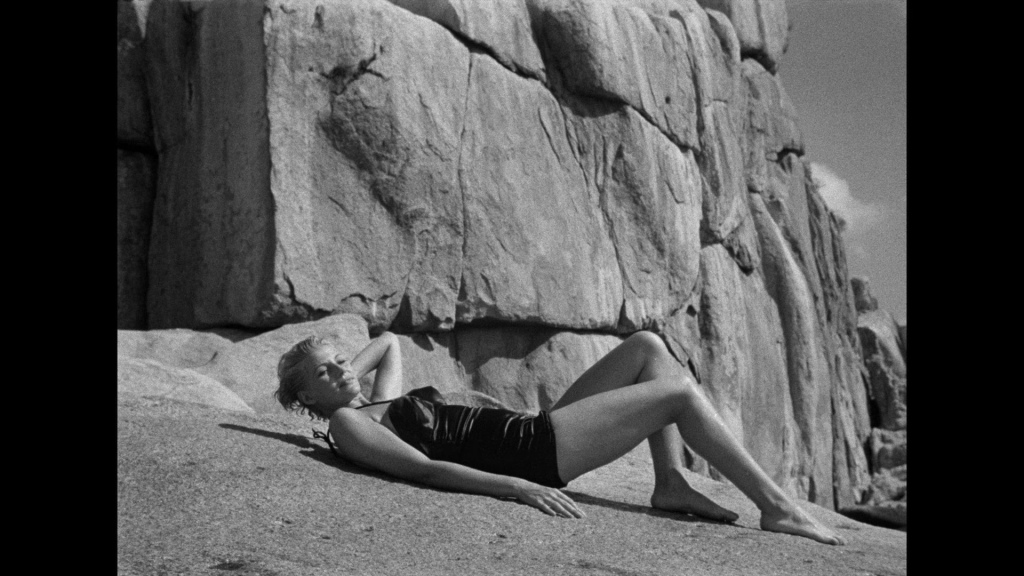
Special Features:
0 of 5 Stars
This Mill Creek Entertainment release doesn’t offer any supplemental features.
The previous Sony edition had a commentary by Peter Bogdanovich, but the transfer of the actual film wasn’t terribly great. The UK Indicator release was wise enough to carry this commentary over to their disc while also adding a video interview about the film with Bogdanovich, an appreciative video essay by Simon Callow, the theatrical trailer, and a trailer commentary by Joe Dante.

Final Words:
The Lady from Shanghai is an interesting but extremely flawed film due to studio tampering. Those fond of Orson Welles or the film noir genre would be wise to add it to their collections, but one doubts if it would appeal to everyone. This Mill Creek Entertainment release is surprisingly solid as it has been taken from a gorgeous 4K restoration transfer and rendered at a maxed out bitrate (on a single layer disc). Those who wish to own a similar transfer in addition to supplemental features will have to pay much more and order the Indicator release from their website. However, if one measures the value of Indicator’s supplemental material against their asking price, they will find that it comes up short on the value end. Most people will find it difficult not to save their hard earned money and choose the Mill Creek Entertainment edition.
